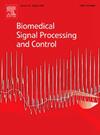Phonocardiography for robust fetal heart rate estimation in real clinical conditions
IF 4.9
2区 医学
Q1 ENGINEERING, BIOMEDICAL
引用次数: 0
Abstract
Fetal heart rate (FHR) analysis is the standard technique for monitoring fetal well-being. Since the non-invasive clinical reference technique for measuring FHR, known as cardiotocography (CTG), suffers from several drawbacks, alternative technologies are now attracting interest. Among them, phonocardiography (PCG) has shown interesting potential. In this study, an original solution is proposed, using a single abdominal PCG (aPCG) to address both the feasibility in clinical routine and the challenge of the difficult detection of temporal events in signals recorded in real clinical conditions. Based on the combination of Non-negative Matrix Factorization (NMF) and Hidden Markov Model (HMM) approaches, the proposed solution exploits the semi-periodicity of the fetal PCG and the temporal continuity a priori of cardiac rhythm to estimate the FHR. Including a pre-processing step of Template subtraction (TS) on aPCG to attenuate maternal component, the proposed algorithm TS+NMF+HMM is evaluated on a database of 38 recordings of pregnant women (total duration of nearly 20 h) and compared to several methods from literature. This new methodological proposition allows a good agreement between estimated FHR and the reference values from CTG (median value of ratio of good agreement at nearly 80% for the whole database) and underlines the interest of using abdominal PCG for fetal well-being monitoring.

求助全文
约1分钟内获得全文
求助全文
来源期刊

Biomedical Signal Processing and Control
工程技术-工程:生物医学
CiteScore
9.80
自引率
13.70%
发文量
822
审稿时长
4 months
期刊介绍:
Biomedical Signal Processing and Control aims to provide a cross-disciplinary international forum for the interchange of information on research in the measurement and analysis of signals and images in clinical medicine and the biological sciences. Emphasis is placed on contributions dealing with the practical, applications-led research on the use of methods and devices in clinical diagnosis, patient monitoring and management.
Biomedical Signal Processing and Control reflects the main areas in which these methods are being used and developed at the interface of both engineering and clinical science. The scope of the journal is defined to include relevant review papers, technical notes, short communications and letters. Tutorial papers and special issues will also be published.
 求助内容:
求助内容: 应助结果提醒方式:
应助结果提醒方式:


